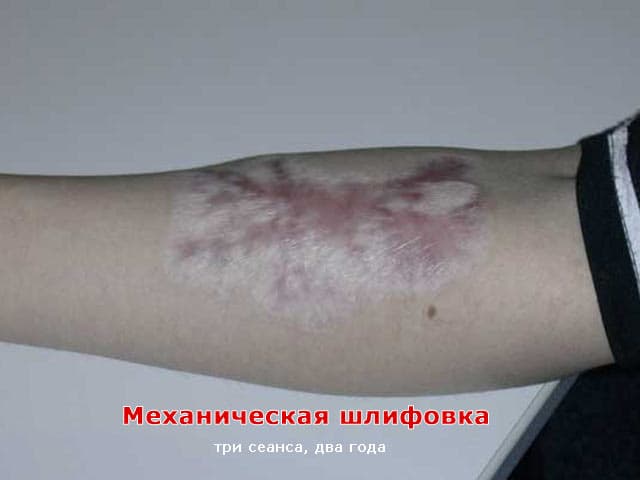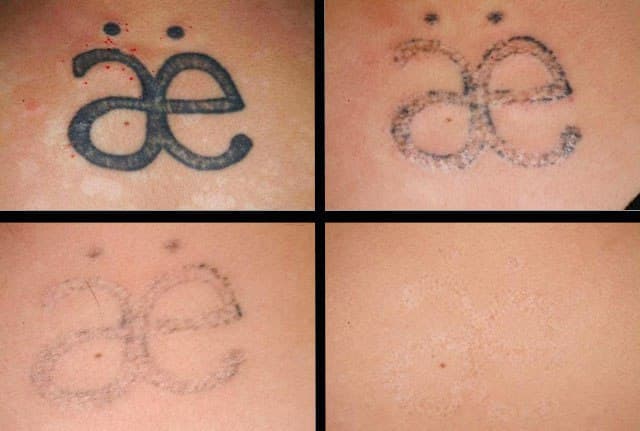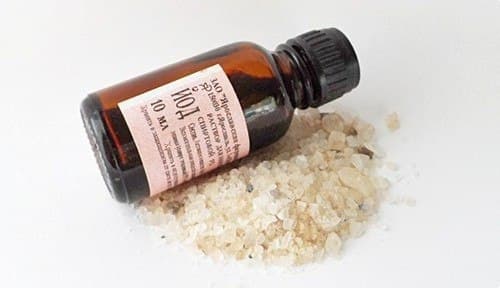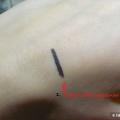How to remove a tattoo: all available methods
Good day, dear blog readers!
Many of you got a tattoo a long time ago. Yes, it was fun, interesting and new then. Someone is satisfied with the tattoo to this day, but someone has a great desire to remove it.
In this article, we will talk about how to remove a tattoo. We will find out what methods of tattoo removal exist in the modern world. Or maybe there is an opportunity to remove a tattoo at home?
The word tattoo means wound or sign. Indeed, in order for the dyes to get under the skin, it has to be injured. Currently, tattooing is a painless and safe procedure. It will be safe under sterile cleanliness conditions.
What guides people when they get a tattoo is not clear. But one thing is clear that many do not realize that this is not a picture that can be easily displayed. Removing a tattoo is a very laborious and difficult process. But possible in our time.
Camouflage
This is the oldest method still in use today. He does not remove the tattoo, but disguises it. A pigment close to the natural color is injected under the skin at the site of the tattoo. The method will not work for large and bright tattoos because the pigment will not be able to interrupt the color. It's not hard to guess that the masked area will be lighter when the skin is tanned or reddened.
Dermabrasion
This is a mechanical method of excretion. Now it is outdated and good, because with the help of a special device or a diamond-coated stone, the top layers of leather with paint are removed. You are still lucky if the tattoo is done with high quality and the paint did not get into the deep layers of the skin.
This method has its drawbacks, and quite a few. It is not suitable for oversized tattoos as it leaves large scars. After the procedure, edema forms, and scabs will be present within 2 months. The scar must be protected for several months from ultraviolet rays, bleach, temperature extremes.
Peeling
Most often, deep and medium peels are used. The middle one affects the upper layers of the skin, and the deep one penetrates deeply. The procedure is carried out with the help of special acids, they remove the skin. The method is also painful and leaves scars.
Electrocoagulation
The drawing is burned with an electric current, the skin is burned out along with the tattoo. The procedure is quite painful, therefore, it takes place under local anesthesia.

The disadvantages of this method are soreness and scarring. The recovery period is also long.
There is a more advanced removal method using a cold plasma coagulant. This method is suitable if the depth of the pattern is small 0.1 - 0.2 mm. There is almost no scar left, because the cold heals the tissue almost immediately.
Cryosurgery
This is a fairly popular method today, although it is outdated and has many disadvantages. Its essence is to cauterize the tattoo with liquid nitrogen. It is quite painful and can be performed without anesthesia. This is perhaps the first minus. You will feel painful sensations only during the procedure itself and 10 minutes after it.
Reducing with nitrogen leaves a small scar. It is light and inconspicuous, but still, it is. The method takes a long time. After the skin is saturated with nitrogen, a bubble forms on it during the day, which hardens within five days. And only then, like plasticine, you can tear it off.
Creams
You can remove the tattoo without surgery. There are special creams. It needs to be applied with tattoo equipment. Getting under the skin, the cream mixes with the paint and comes out. A crust forms and falls off. The method is practically painless and relatively inexpensive. Suitable for those who have tattoos in places where the skin is thin and other procedures will be very painful.
The main disadvantage will be the duration, often such withdrawal lasts more than a year. One session is not enough for you, unless you just wanted to lighten the tattoo. And you probably don't have any special equipment.
Removing tattoos with a laser

This is a new and modern method. Unlike the above methods, it is less traumatic. After the procedure, the skin will be without scars and without other traces of tattooing. The laser is selective and does not affect healthy skin. It penetrates deep enough into the skin and is able to cope with incorrectly executed tattoos.
The downside of such a device will be pain. A small tattoo is removed in 5 minutes, and a simple pain relieving cream will do. And when large areas are removed, local anesthesia is applied. Unfortunately, the laser will not remove everything you need from one session. It will take 2-4 sessions.
Lasers are different:
- Ruby laser. It cannot get into the deeper layers of the skin. It will take a long time to flatten a large area as it works slowly. They often remove black, blue, green colors.
- Alexandrite laser. It is similar to a ruby laser, only faster. With the help of it, they fight against dark pigments, and he cannot remove red or orange.
- Neodymium laser. This is a new technology, it is considered universal. The laser is rightfully called such, because it penetrates to any depth of the skin and copes with any color. You probably already guessed that this procedure costs a lot.
- Laser vaporization. This is the usual vaporization of the pattern with a laser. It is suitable only for high-quality tattoos, which lie in the uppermost layer of the skin. Take this seriously. After all, if the tattoo was done by an amateur, after the procedure you will begin to experience discomfort and you will have scars.
Contraindications:
- Skin diseases in the tattoo removal area, as well as moles or.
- Infectious diseases will also become a barrier.
- Diseases of the cardiovascular and endocrine system.
Home ways to remove a tattoo
Iodine
You will need 5% iodine. You can get it at the pharmacy. Be sure to pay attention to this condition, otherwise you will simply get a chemical burn on your skin.

You need to apply iodine to the tattoo 3 times a day, be careful not to get it on healthy skin. Trace the tattoo neatly along the contour, copy it. After iodine treatment, the area does not need to be covered with a plaster or bandage. You will quickly see how the skin begins to peel and die off, and with it the paint. Do not pull off the skin - it hurts!
The process can take 2-4 weeks. But the deadline may change. It depends on how long ago you got the tattoo, on the correctness of its application, color, paint. To moisturize the affected area, you can apply Actovegin ointment at night.
Salt
Take 2 tablespoons. salt and fill with water so that half of the salt dissolves. Sea salt is also useful, but it will be painful to carry out the procedure.
Prepare the tattoo site for the procedure. Wash with soap and dry, shave off your hair if present. So that the procedure is less painful. Take a sponge and dip in salt, then rub on the tattoo in circular motions for 30 minutes. Wait for the salt to dry and rinse it off. Together with the salt, the paint will go away. Perform the procedure daily. You can spend several months on getting rid of a tattoo.
Celandine
Tincture of celandine is used to treat small areas of the skin. A burn is obtained on the skin, therefore, the top layer of the skin comes off with the tattoo. This procedure can leave a scar. Small areas are cultivated because the plant is considered poisonous.
For whatever reason you got the tattoo, it's up to you. But the circumstance and age are changing, if you now have a problem with tattooing, then feel free to use the advice.
See you on the blog pages!
The article was written for you by Ekaterina Vaneeva.
 How to have the perfect date when you're not romantic
How to have the perfect date when you're not romantic What diseases do you need to drink coffee - benefits and effects
What diseases do you need to drink coffee - benefits and effects All my brown eyeliners
All my brown eyeliners